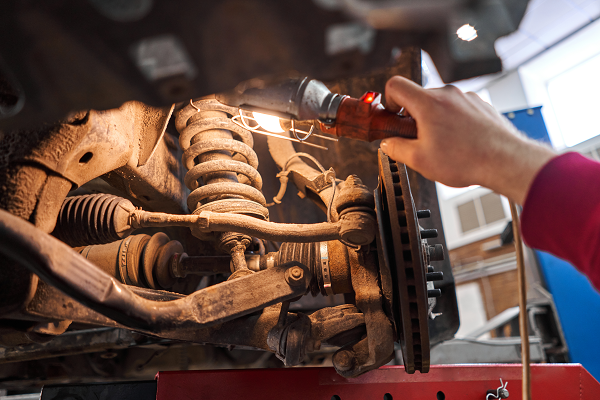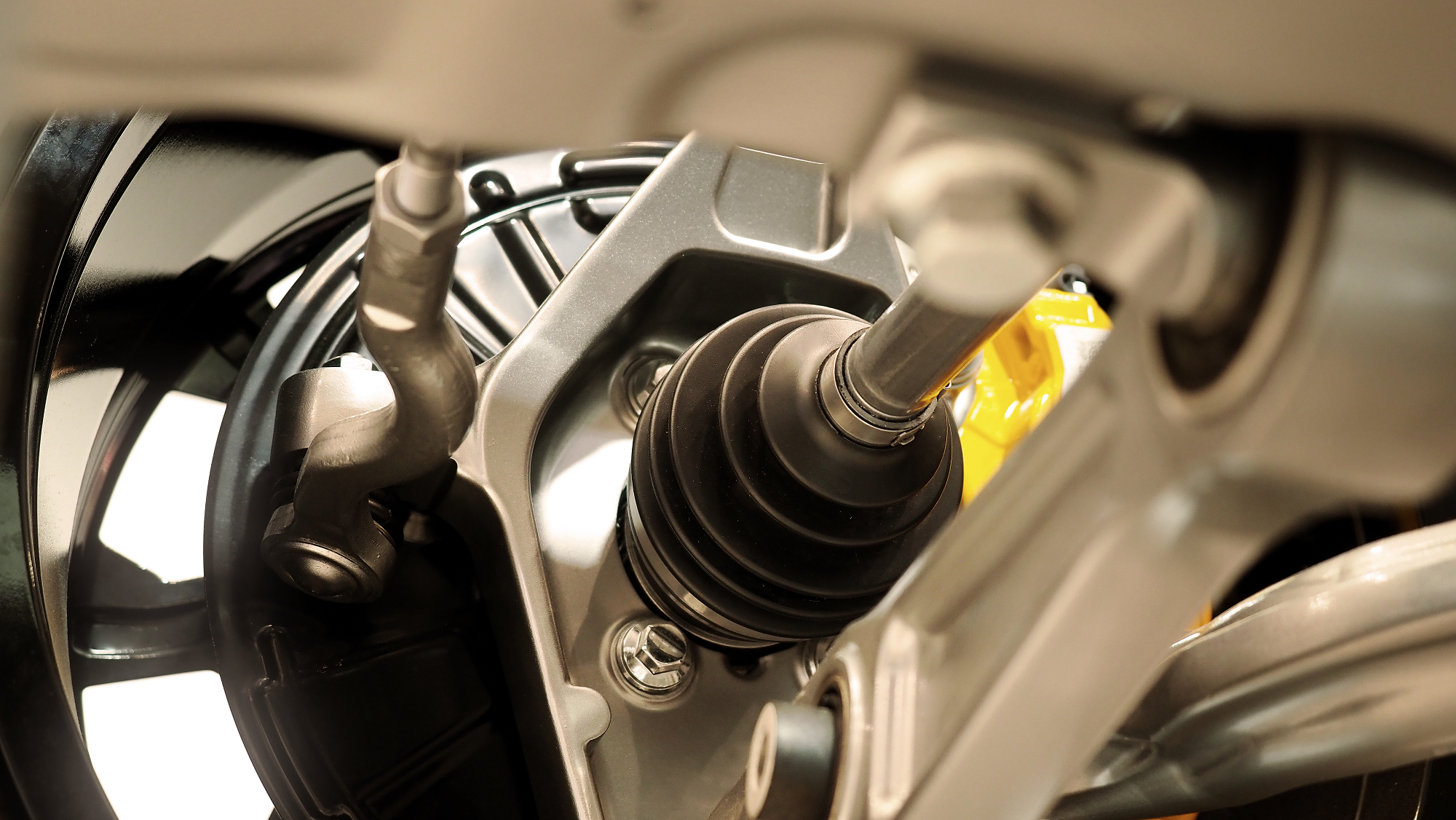How Often Should You Check Your Vehicle’s Suspension for Optimal Performance and Safety?
You should inspect your suspension system at least annually or every 12,000 miles. If you frequently drive under severe conditions or engage in aggressive driving, increase this frequency to catch potential issues early. Aligning these inspections with your routine vehicle maintenance is essential, particularly after hitting potholes or curbs. Watch for signs of wear, such as uneven tire wear or unusual noises. Regular inspections enhance safety, improve ride comfort, and maintain vehicle performance. There’s more to explore about optimizing your vehicle’s suspension. If you are looking for professional services of suspension service in Vancouver WA, contact Springs Brake and Suspension today.
Importance of Suspension Inspections
Why is it crucial to prioritize suspension inspections? Regular suspension inspections are vital for ensuring your vehicle’s safety and performance.
By having your suspension inspected, you can identify early signs of wear and tear, preventing costly repairs and extending the lifespan of components. This proactive approach to suspension maintenance enhances ride comfort and maintains stability and control while driving, reducing the risk of accidents.
Furthermore, timely inspections improve fuel efficiency, as compromised handling can lead to increased fuel consumption. Frequent checks become even more essential if you drive in harsh conditions or adopt an aggressive driving style.
Prioritizing suspension inspections ensures your vehicle remains safe, efficient, and comfortable on the road.
Recommended Inspection Frequency

Regular inspections of your vehicle’s suspension system are vital, but knowing how often to perform these checks is equally essential.
For optimal safety and performance, it’s recommended that your suspension be checked at least annually or every 12,000 miles. Consider more frequent inspections if you frequently drive in harsh conditions or aggressively.
Additionally, align your suspension checks with routine maintenance schedules to catch potential issues early. Inspect your suspension components after hitting potholes or curbs to identify any damage.
Regular evaluations can prevent uneven tire wear and ensure your vehicle operates efficiently. Refer to your manufacturer’s guidelines for specific recommendations based on your vehicle type and usage to maintain peak performance over time.
Are you in need of a Suspension Service for your vehicle?
Feel free to contact Springs Brake and Suspension for expert assistance!
Signs of Suspension Wear
Many drivers overlook the signs of suspension wear until they notice a significant issue. Pay attention to uneven tire wear; it often indicates your suspension isn’t maintaining proper contact with the road.
A rough ride, characterized by excessive bouncing or jarring, suggests worn components that warrant a visual inspection. If your vehicle pulls to one side, it may signal alignment issues linked to suspension wear.
Unusual noises, like clunking or rattling, particularly over bumps, frequently point to failing struts or shocks. Additionally, fluid leaks beneath your vehicle can indicate problems with shocks or struts, significantly impacting suspension performance.
Regularly monitoring these signs of suspension wear can help keep your tires in optimal condition and enhance overall vehicle safety.
Factors Influencing Suspension Health
Suspension health is influenced by various factors that can accelerate wear and reduce performance. Your driving habits play a pivotal role; aggressive maneuvers like rapid acceleration and hard braking can significantly increase wear on your suspension system.
Additionally, navigating rough roads or off-road conditions exposes your system to heightened stress, leading to faster degradation. The vehicle’s weight also matters—heavier loads exert extra pressure on suspension components, amplifying wear.
Poorly maintained roads, filled with potholes and uneven surfaces, can quickly create issues, necessitating timely inspections. Regular maintenance, including adhering to inspection schedules and addressing warning signs promptly, is essential for preserving your suspension system’s longevity and performance.
Staying vigilant about these factors can enhance both safety and vehicle reliability.
Benefits of Regular Inspections
Maintaining your vehicle’s suspension system through regular inspections offers significant advantages that can enhance safety and performance.
By conducting these inspections annually or every 12,000 miles, you can identify wear and potential issues early, preventing costly repairs.
Regular inspections improve vehicle safety by ensuring stability and control, significantly reducing the risk of accidents caused by suspension-related failures. They also enhance ride comfort and handling, providing a more enjoyable driving experience while maintaining optimal performance.
Additionally, catching problems early can extend the lifespan of key components like shocks and struts, resulting in overall cost savings.
Proper suspension care also enhances tire lifespan and performance, keeping your tires in better contact with the road.
DIY Inspection Tips
Conducting regular DIY inspections can be invaluable for ensuring your vehicle’s suspension system remains in optimal condition.
Start by visually inspecting key components, especially the shocks and struts, at least once a month or before embarking on long trips. Look for signs of wear or leaks.
Check for uneven tire wear during tire rotations, which may indicate suspension issues.
Perform a bounce test by pushing down on each corner; if your shocks or struts bounce more than twice, they might need attention.
Finally, listen for unusual noises like clunking when navigating rough terrain, as these could signal worn parts.
Maintaining good condition in your suspension system enhances safety and performance.
Maintenance Tips for Longevity
The longevity of your vehicle’s suspension system hinges on consistent and proactive maintenance practices.
To ensure a smooth ride and optimal performance, follow these essential tips:
- Schedule regular inspections at least once a year or every 12,000 miles.
- Align suspension checks with routine maintenance, like oil changes.
- If you frequently drive on rough terrain, increase inspection frequency to catch accelerated wear.
- Inspect the suspension immediately after hitting potholes or curbs to prevent further damage.
Choosing Springs Brake and Suspension: The Smart Choice for Professional Expertise
At Springs Brake and Suspension, we take pride in providing the best solutions for our customers’ vehicle needs. If you’ve conducted your DIY inspections and feel it’s time to evaluate your suspension system thoroughly, we’re here to help. Our highly trained mechanics specialize in suspension repair and steering systems, ensuring you receive top-notch service.
We understand that a comfortable ride is essential, which is why we focus on proper wheel and tire alignment to enhance your driving experience. Our professional technicians use advanced diagnostic equipment to assess your suspension components, including shock absorbers, accurately to ensure everything is in peak condition.
Choose Springs Brake and Suspension for your vehicle’s needs, and let us help you enjoy a smooth, safe ride!
Are you in need of a Suspension Service for your vehicle?
Feel free to contact Springs Brake and Suspension for expert assistance!

